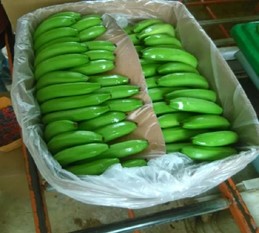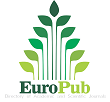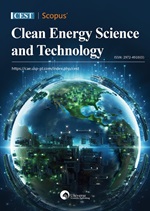Exploring banana production in Africa for food security and economic growth—A short review
DOI:
https://doi.org/10.18686/fnc.v2i1.125Keywords:
banana; production; food security; Africa; European marketAbstract
Food insecurity is a critical global issue, but it is far more visible and challenging to address in Africa. Millions of Africans suffer from hunger and malnutrition. Food security programs are an essential part of human survival, and for that to happen, food that is nutritious and safe must be readily available to people. A society that will be well fed requires not only a strong policy framework but also institutional reforms that promote production and make agriculture more attractive to young people. In this context, sustainable production of banana crops could play a critical role in Africa’s food security and advance economic growth. Bananas have an important position in human nutrition all over the world; they are a staple fruit consumed by many. A banana is a storehouse for minerals, vitamins, and carbohydrates and is regarded as a reserve of energy. It has a great prospect for foreign earnings through exports. The continuous growth in Africa’s population, with its attendant increase in food demands, calls for a radical transformation in its agricultural production system. There are land and human capital resources that could be engaged. The estimated cultivable land mass in Africa for banana production is estimated to be around 50 million hectares, with over 60% of its population below the age of 25. Africa could achieve a decent society that is free from the burden of hunger and attain economic prosperity by leveraging on massive banana production for local needs and exports. Bananas have enormous potential as a recipe for food security and economic prosperity if well harnessed.

Downloads
Published
How to Cite
Issue
Section
License
Copyright (c) 2024 Owolade Samuel Olufemi

This work is licensed under a Creative Commons Attribution 4.0 International License.
References
1. Aderibigbe OR, Ezekiel OO, Owolade SO, et al. Exploring the potentials of underutilized grain amaranth (Amaranthus spp.) along the value chain for food and nutrition security: A review. Critical Reviews in Food Science and Nutrition. 2020; 62(3): 656-669. doi: 10.1080/10408398.2020.1825323
2. Food and Agriculture Organization of the United Nations. The State of Food Security and Nutrition in the World 2022. Available online: https://www.fao.org/documents/card/en?details=cc0639en (accessed on 19 February 2024).
3. African Development Bank Group. AfDB launches “Feed Africa: A Strategy for Agricultural Transformation in Africa 2016-2025”. Available online: https://www.afdb.org/en/news-and-events/afdb-launches-feed-africa-a-strategy-for-agricultural-transformation-in-africa-2016-2025-16122 (accessed on 1 March 2024).
4. Dotto J, Matemu AO, Ndakidemi PA. Potential of cooking bananas in addressing food security in East Africa. International Journal of Biosciences. 2018; 278-294. doi: 10.12692/ijb/13.4.278-294
5. Alemu MM. Banana as a Cash Crop and Its Food Security and Socioeconomic Contribution: The Case of Southern Ethiopia, Arba Minch. Journal of Environmental Protection. 2017; 08(03): 319-329. doi: 10.4236/jep.2017.83024
6. Aurore G, Parfait B, Fahrasmane L. Bananas, raw materials for making processed food products. Trends in Food Science & Technology. 2009; 20(2): 78-91. doi: 10.1016/j.tifs.2008.10.003
7. Perrier X, De Langhe E, Donohue M, et al. Multidisciplinary perspectives on banana (Musa spp.) domestication. Proceedings of the National Academy of Sciences. 2011; 108(28): 11311-11318. doi: 10.1073/pnas.1102001108
8. Shahbandeh M. Leading producers of bananas worldwide in 2022, by country (in thousand metric tons). Available online: https://www.statista.com/statistics/811243/leading-banana-producing-countries/ (accessed on 1 March 2024).
9. Yang J, Tu J, Liu H, et al. Identification of an immunostimulatory polysaccharide in banana. Food Chemistry. 2019; 277: 46-53. doi: 10.1016/j.foodchem.2018.10.043
10. Zahra F, Khalid S, Aslam M, Sharmeen Z. Health benefits of banana (Musa)—A review study. International Journal of Biosciences (IJB). 2021; 18(4): 189-199. doi: 10.12692/ijb/18.4.189-199
11. Mondal A, Banerjee S, Bose S, et al. Cancer Preventive and Therapeutic Potential of Banana and Its Bioactive Constituents: A Systematic, Comprehensive, and Mechanistic Review. Frontiers in Oncology. 2021; 11. doi: 10.3389/fonc.2021.697143
12. Zafar IM, Saleha A, Hoque MME, Sohel RM. Antimicrobial and cytotoxic properties of different extracts of Musa sapientum L. subsp. sylvestris. International Research Journal of Pharmacy. 2011; 2(8): 62-65.
13. Hernández-Ruiz Á, García-Villanova B, Guerra-Hernández E, et al. A Review of A Priori Defined Oxidative Balance Scores Relative to Their Components and Impact on Health Outcomes. Nutrients. 2019; 11(4): 774. doi: 10.3390/nu11040774
14. Qusti SY, Abo-Khatwa AN, Lahwa MA. Free radical scavenging enzymes of fruit plant species cited in the Holy Quran. World Applied Sciences Journal. 2010; 9(3): 338-344.
15. Reinisalo M, Kårlund A, Koskela A, et al. Polyphenol Stilbenes: Molecular Mechanisms of Defence against Oxidative Stress and Aging-Related Diseases. Oxidative Medicine and Cellular Longevity. 2015; 2015: 1-24. doi: 10.1155/2015/340520
16. World Health Organization. A global brief on hypertension : silent killer, global public health crisis: World Health Day 2013. Available online: https ://www.who.int/cardiovascular_ diseases/publications /global_brief_hypertension/en/ (accessed on 1 March 2024).
17. Juraschek SP, Miller ER, Weaver CM, et al. Effects of Sodium Reduction and the DASH Diet in Relation to Baseline Blood Pressure. Journal of the American College of Cardiology. 2017; 70(23): 2841-2848. doi: 10.1016/j.jacc.2017.10.011
18. Anindyah DS, Farmawati A. Raja Bandung Banana (Musa paradisiacaL.cv Raja Bandung) Prevents Increased Systolic Blood Pressure in Rats Given Acute Stress Test. International Journal of Public Health Science (IJPHS). 2015; 4(1): 37. doi: 10.11591/ijphs.v4i1
19. Kamyab R, Namdar H, Torbati M, et al. Medicinal Plants in the Treatment of Hypertension: A Review. Advanced Pharmaceutical Bulletin. 2020; 11(4): 601-617. doi: 10.34172/apb.2021.090
20. Kritsi E, Tsiaka T, Sotiroudis G, et al. Potential Health Benefits of Banana Phenolic Content during Ripening by Implementing Analytical and In Silico Techniques. Life. 2023; 13(2): 332. doi: 10.3390/life13020332
21. Chrisanto EY. Effectiveness of Ambon Bananas in Reducing Blood Pressure in Hypertension Sufferers in the Work Area of Krui Health Center, Pesisir Barat Regency. Jurnal Kesehatan Holistik (The Journal of Holistic Healthcare). 2017; 11(3): 167-174.
22. Lopes MB, Rajasekaran R, Lopes Cançado ACF, et al. In vivo Confocal Raman Spectroscopic Analysis of the Effects of Infrared Radiation in the Human Skin Dermis, 2017 (Indonesian). Photochemistry and Photobiology. 2017; 93(2): 613-618. doi: 10.1111/php.12701
23. Hwang E, Park SY, Sun ZW, et al. The Protective Effects of Fucosterol Against Skin Damage in UVB-Irradiated Human Dermal Fibroblasts. Marine Biotechnology. 2013; 16(3): 361-370. doi: 10.1007/s10126-013-9554-8
24. Zafar IM, Saleha A, Hoque MME, Sohel RM. Antimicrobial and cytotoxic properties of different extracts of Musa sapientum L. subsp. sylvestris. International Research Journal of Pharmacy. 2011; 2(8): 62-65.
25. Shruthi D. Medicinal uses of banana (Musa paradisiaca). Drug Invention Today. 2019; 12(1).
26. Rodríguez-Ambriz SL, Islas-Hernández JJ, Agama-Acevedo E, et al. Characterization of a fibre-rich powder prepared by liquefaction of unripe banana flour. Food Chemistry. 2008; 107(4): 1515-1521. doi: 10.1016/j.foodchem.2007.10.007
27. Affognon H, Mutungi C, Sanginga P, et al. Unpacking Postharvest Losses in Sub-Saharan Africa: A Meta-Analysis. World Development. 2015; 66: 49-68. doi: 10.1016/j.worlddev.2014.08.002
28. Mashau ME, Moyane JN, Jideani IA. Assessment of post harvest losses of fruits at Tshakhuma fruit market in Limpopo Province, South Africa. African Journal of Agriculture Research. 2012; 7(29): 4145-4150. doi: 10.5897/AJAR12.392
29. Menezes EW, Tadini CC, Tribess TB, et al. Chemical composition and nutritional value of unripe banana flour (Musa acuminata, var. Nanicão). Plant Foods for Human Nutrition. 2011; 66: 231–237. doi: 10.1007/s11130-011-0238-0
30. Murmu SB, Mishra HN. Measurement and modelling the effect of temperature, relative humidity and storage duration on the transpiration rate of three banana cultivars. Scientia Horticulturae. 2016; 209: 124-131. doi: 10.1016/j.scienta.2016.06.011
31. Yang X, Zhang Z, Joyce D, et al. Characterization of chlorophyll degradation in banana and plantain during ripening at high temperature. Food Chemistry. 2009; 114(2): 383-390. doi: 10.1016/j.foodchem.2008.06.006
32. Sarah S, Bornare DT, Ayesha S. Process Optimization for making unripe banana flour and its utilization in vermicelli. International Journal of Advance Scientific Research and Engineering Trends. 2017; 2(10): 229-237.
33. Dodo MK. Examining the potential impacts of climate change on international security: EU-Africa partnership on climate change. SpringerPlus. 2014; 3: 194. doi: 10.1186/2193-1801-3-194
34. Jayathilakan K, Sultana K, Radhakrishna K, Bawa AS. Utilization of byproducts and waste materials from meat, poultry and fish processing industries: A review. Journal of Food Science and Technology. 2011; 49(3): 278-293. doi: 10.1007/s13197-011-0290-7
35. Bornare PP, Deshmukh DS, Talele DC. Recent trends in banana by-products and marketing strategies: A critical review. International Journal of Science, Spirituality, Business and Technology. 2014; 3(1): 2277-7261.
36. Guiné RPF. The drying of foods and its effect on the physical-chemical, sensorial and nutritional properties. International Journal of Food Engineering. 2018; 4(2): 93-100. doi: 10.18178/ijfe.4.2.93-100
37. Razali SA, Mohd Nor MZ, Anuar MS, et al. Banana Powder Production via Foam Mat Drying. Advances in Agricultural and Food Research Journal. Published online December 16, 2020. doi: 10.36877/aafrj.a0000142
38. Yang G, Wang J, Cheng Y, et al. Banana powder: Functions current status and new technology on processing. International Journal of Food Science and Biotechnology. 2007; 26(5): 121-126.
39. Rappert S, Müller R. Odor compounds in waste gas emissions from agricultural operations and food industries. Waste Management. 2005; 25(9): 887-907. doi: 10.1016/j.wasman.2005.07.008
40. Gigot C, Ongena M, Fauconnier M, et al. The lipoxygenase metabolic pathway in plants: potential for industrial production of natural green leaf volatiles. Biotechnologie, Agronomie, Société et Environnement. 2010; 14: 451-460.
41. Falade KO, Ogundele OM, Ogunshe AO, et al. Physico-chemical, sensory and microbiological characteristics of plain yoghurt from bambara groundnut (Vigna subterranea) and soybeans (Glycine max). Journal of Food Science and Technology. 2014; 52(9): 5858–5865. doi: 10.1007/s13197-014-1657-3
42. Owolade SO, Egbekunle KO, Awe OFE, et al. Effect of three different varieties of banana inclusion on nutritional and sensory acceptability of yogurt. African Journal of Biological Sciences. 2022; 4(2): 96-105. doi: 10.33472/AFJBS.4.2.2022.96-105




.jpg)
.jpg)

